Gamification – the use of game mechanics to motivate people to achieve their goals – has proven to significantly increase the performance of underperforming sales agents. This case outlines the impact of adding 3 gamification features to the Sales & Distribution mobile app sales agents use in their daily work in Kinshasa, Democratic Republic of Congo.
“Once upon a time, a team was routinely performing above expectations, the manager was happy, everyone was motivated. They received bonuses and lived happily ever after.”
Unfortunately, securing long-lasting team performance is often more of a fairytale than reality. However, it is possible to set mechanisms in place that drive engagement. Let me take you to Kinshasa, the capital of the Democratic Republic of Congo, to listen to a true story about motivation and performance.
In Kinshasa, 800 sales agents of a leading telecom operator hit the road daily to visit point of sales. They enquire about sales issues, manage stockouts, communicate about promotions, execute tasks mandated by their managers, monitor competition, etc.
It is a tough job: point of sales can be hard to locate, the reasons for a sales drop can be shady, and sometimes the shop owner is simply nowhere to be found. As with any job, one has to eat enough motivation at breakfast to manage the days, weeks, months.
The sales agents of our story are equipped with a digital sales assistant on their mobile phones. The app (Sales & Distribution) gives indications on the point of sales to visit by priority and the next best sales action to take. Field agents also report their tasks in the tool, which in return enables their manager to track their performance and field issues in real time.
For several months, sales agents were performing well – accomplishing 30 tasks per day on average. But in the long run, motivation and excitement ran out of steam for a significant group of users. Performance metrics dropped. These sales guys needed a kick to get back on track!
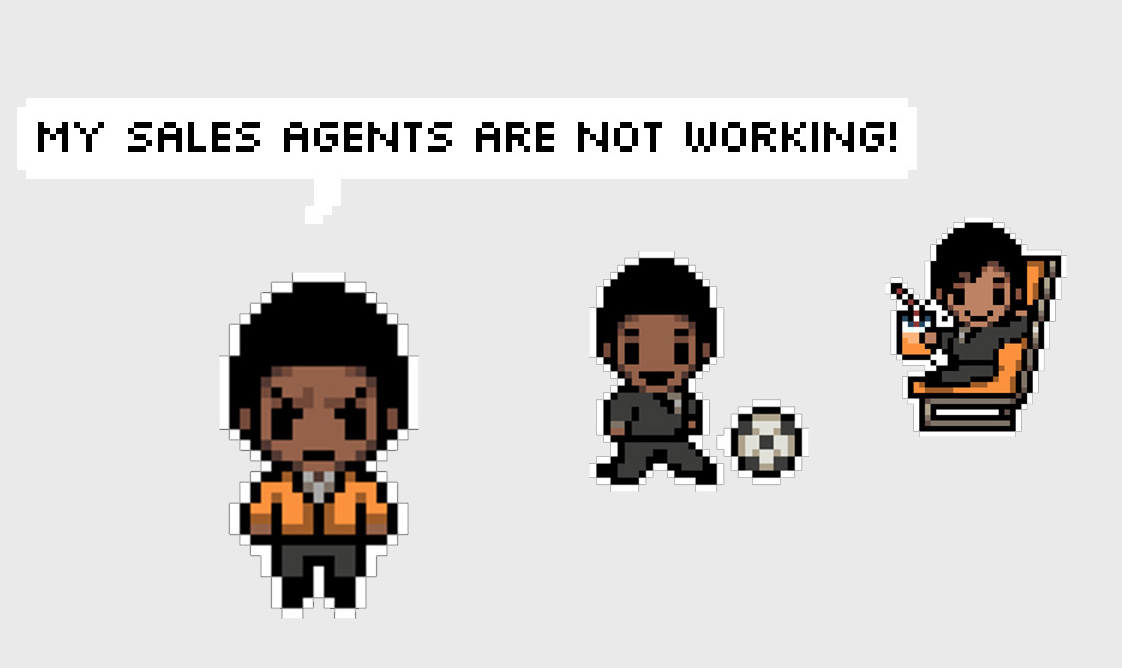
Give them the stick or the carrot?
The problem is that most business don’t understand how to motivate people. Short-term incentives or unilateral punishments do not address what deeply drives human excitement. Instead of a stick or carrot approach, how about making underperformers play a game?
Gamification is “the use of game mechanics and experience design to digitally engage and motivate people to achieve their goals” (Gartner, 2014).
The mobile app used by the sales agents was simply the perfect support for adding gamification features to their routine. And that’s what we did.
The gamification features that were added to the mobile app cover 3 scenarios:
The app sends automated and personalized messages to field agents to incentivize them to reach their targets. It puts them into competition with their peers. There is no financial reward directly attached to the gamification challenge, but sales agents receive commissions based on their performance.
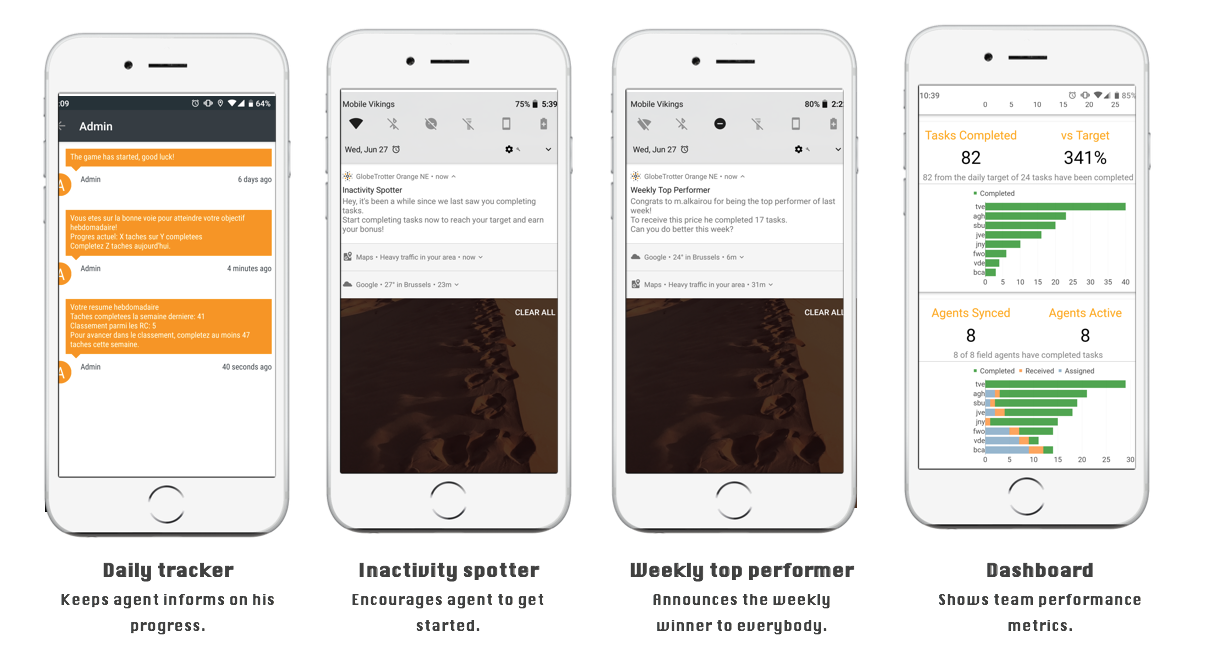
Case: Fabien Kobia, born to play.
Now, let’s look at Fabien Kobia, a sales agent. Over the last few months, Mr. Kobia completed no activities at all. His manager had no clue about his whereabouts, assuming he stayed at home instead of visiting telecom shops. But with the introduction of gamification, Mr. Kobia became another person. Playing revealed his competitive self. He made a point of beating his colleagues and winning this game, showing unprecedented motivation to excel.
In one month, he managed to visit 156 point of sales, increase his average daily tasks by 234%, and work 14 additional days. Pretty impressive!
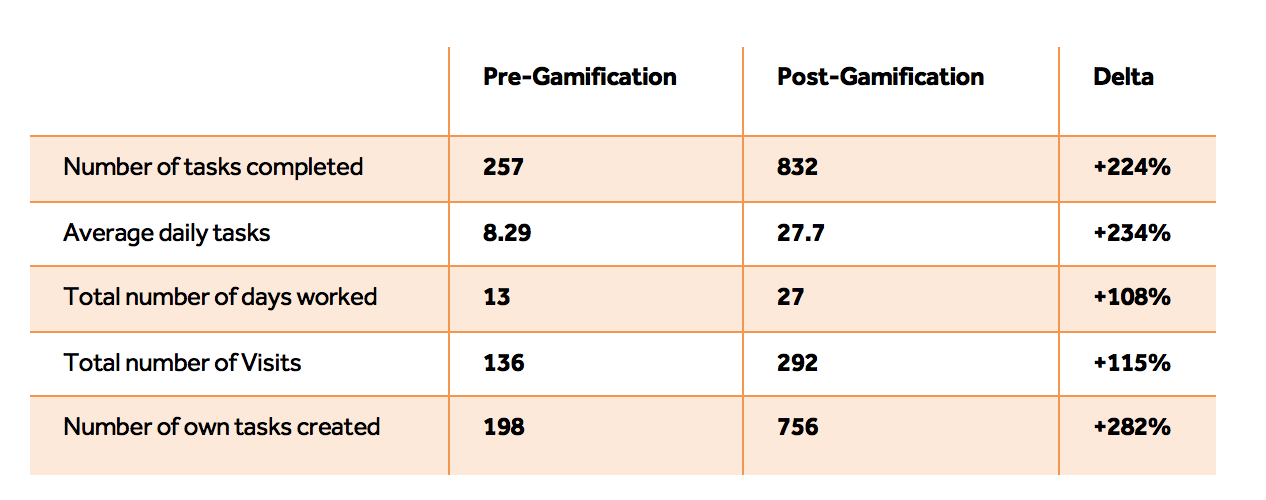
In fact, Fabien Kobia belonged to a test sample of underperformers completing less than 15 tasks on average per day (the threshold is fixed at 30 tasks per day). Gamification proved to be especially effective for this group of people.
Upon the introduction of gamification features, underperformers increased their performance to 15-20 tasks per day. They even created 2.5 times more tasks themselves, showing extra dedication to deliver.
On average, low performers also increased the number of working days by 2.45 days compared to the previous months, allowing them to visit up to 25 additional point of sales.
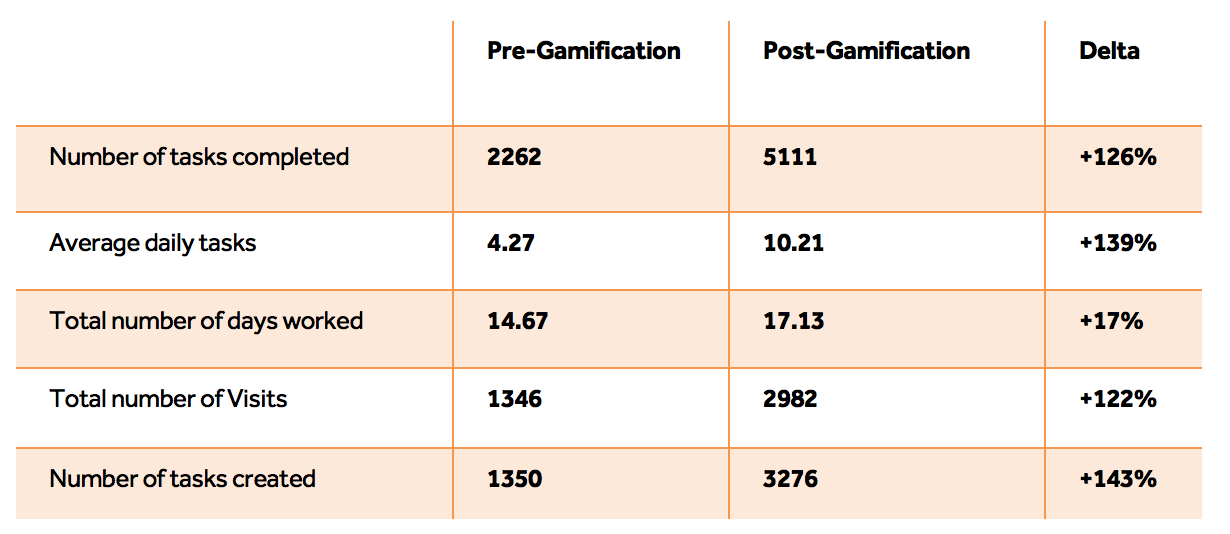
The impact of gamification was also tested on a group of good performers.
For this group, the gamification has helped them to maintain high engagement levels rather than increasing their performance. This is not surprising considering performance was already good enough.
There is a top performer in every Fabien Kobia that may be part of your team.
Nowadays, gamification is being used more and more to foster motivation. Gamification works especially well because it is based on dynamics that are present in every human being: gratification, status, achievement, creativity, competition, and altruism.
The implantation of a gamer spirit in the activity of an employee is an excellent way to boost performance and influence behavior. Keep in mind that there is a top performer in every Fabien Kobia that may be part of your team. The trick is to find the right game to play.
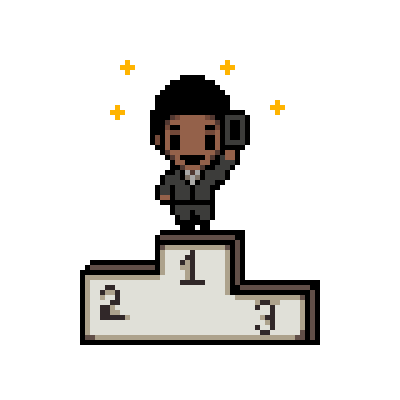
This case was developed by Bregt Cabus and Filipe Wolfrum Caeiros.
